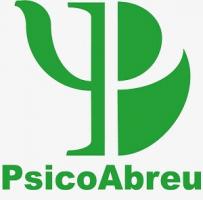What is subclinical depression?
According to the WHO, depression is the leading cause of disability worldwide. Many people experience a drop in mood in the form of chronic sadness and associated behavioral, cognitive, and emotional problems that prevent them from leading full lives.
The DSM-5 establishes very clearly what are the diagnostic criteria for major depressive disorder, indicating that the patient must present a minimum of five of the nine symptoms that are specified in this manual for the depression.
But... What happens to those who have symptoms but do not meet that minimum? Those people would enter into the idea of subclinical depression, a problem without as many symptoms as major depression but equally disabling and generating discomfort. Let's delve into this health problem.
- Related article: "The 6 types of mood disorders"
Subclinical depression: what is it?
Depression is a psychological problem with different symptoms. Among the most characteristic we find a decline in mood, reduced ability to experiment pleasure and decreased self-esteem, all accompanied by affective, cognitive and behavioral manifestations chord.
According to the WHO (World Health Organization), depression is the leading cause of disability worldwide. Its milder variant, subclinical depression, also has important repercussions on the quality of life of those affected.
The term “subclinical” refers to the fact that the person is showing symptoms similar to those of the disorder, but not enough of them to make the diagnosis of a certain syndrome, disorder or disease. Applied to mood disorders, subclinical depression is a condition in which have some symptoms of depression, but not enough to be able to give the diagnosis. People with subclinical depression may experience brief and recurring episodes of depressive symptoms.
Subclinical depression is a condition that has important implications for the functioning and well-being of those who present it. Although this condition is milder than in cases of major depression, it is known that people with Subclinical depression present a significant deterioration in life and show worse work and academic performance And social. In addition, they are at risk of progressing to major depressive disorder and addiction.

There are no uniform criteria regarding the definition of what is subclinical depression. In fact, there is no unequivocal terminology regarding this condition, finding all kinds of names in the expert bibliography for what we here call subclinical depression, such as subsyndromic depression, minor depression, and non-depressive symptoms specific. Despite this disparity in terms of its name, in most cases it is considered subclinical depression one in which the patient has at least two characteristic symptoms of depressive disorder higher.
In the current Diagnostic and Statistical Manual of Mental Disorders (DSM-5), subclinical depression is classifies within the category “other specific depressive disorder” and “depressive episode with symptoms insufficient ”.
- You may be interested in: "The 6 differences between sadness and depression"
Symptoms of this condition
The symptoms of subclinical depression coincide with those of major depressive disorder, the main difference between both health conditions is that in the subclinical there are fewer symptoms or they appear in a milder way.
- Depressed mood most of the day
- Significant decrease in interest or pleasure in almost all activities
- Major weight loss or weight gain
- Insomnia or hypersomnia (sleeping too much) almost every day
- Psychomotor agitation or retardation almost every day
- Fatigue or loss of energy
- Feeling worthless
- Concentration problems
- Recurring thoughts of death and suicidal thoughts
To receive a diagnosis of major depressive disorder, a minimum of five of the symptoms just mentioned must be present., and that the patient indicates having presented them during the last two weeks. In the case of subclinical depression, these symptoms are reduced to a minimum of two and a maximum of four.
Early detection is key to successful treatment. In cases of subclinical depression, treatment is focused on making sure that the symptoms do not worsen and degenerate into a case of major depressive disorder. However mild they may be, the symptoms in subclinical depression are still just that, symptoms, which can become very disabling.
- Related article: "Anhedonia: the inability to feel pleasure"
Causes of subclinical depression
Depression is a very complex mental condition, which can be influenced by several different factors. Some risk factors can increase the probability that the person experiences depression symptoms, among which we find genetics, family history, history of abuse and trauma, use of some drugs, significant life changes, stress, medical illness and abuse of substances.
Subclinical depression is depression only milder, with fewer symptoms. Thus, the causes behind suffering this minor depression would be the same as for major depression, only they would not have acted with as much force or else the person would present some type of protection factor that would have prevented him from presenting the serious disorder.
However, it is important to insist on the idea that having mild symptoms of depression is in itself a risk factor for later developing major depression.
- You may be interested in: "The 10 benefits of going to psychological therapy"
Diagnosis
As we said, subclinical depression is a case of depression in which sufficient criteria are not met to be diagnosed as such. Many people have depressive symptoms but, by not occurring in sufficient numbers, they would not receive the diagnosis of major depressive disorder.
Several studies suggest that subclinical depression can have as much impact on a person's functioning as major depression. Subclinical depression it can have the same negative effects on the general health of the patient as major depression, only less severely. In this sense, some experts and researchers on this issue consider that depression would be more of a spectrum, a continuum from fewer to more depressive symptoms.


